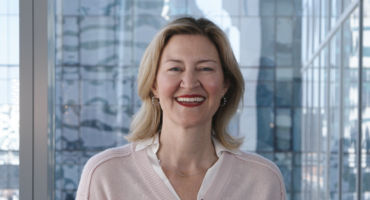- Fixed Income Portfolio Manager
Skip to main content
- Funds
- Insights
- Capabilities
- About Us
- My Account
Our Funds
Fund Documents
Global Multi-Strategy Fund
The views expressed are those of the author at the time of writing. Other teams may hold different views and make different investment decisions. The value of your investment may become worth more or less than at the time of original investment. While any third-party data used is considered reliable, its accuracy is not guaranteed. For professional, institutional, or accredited investors only.
One of the discussion topics du jour is how the credit and equity markets might react to the US Federal Reserve (Fed) interest-rate hikes that are widely anticipated in the coming months. As is often the case with me, I find it helpful here to refer to past hiking regimes and market performances as a sort of guidepost.
To wit, I examined the historical returns of both US credit (for this purpose, proxied by corporate high-yield bonds) and US equities (represented by the S&P 500 Index) during the six months before the first rate increase of a Fed hiking cycle through the 12 months after said increase. The data demonstrate that both markets not only performed well heading into the first hike (although there’s some circularity because the Fed likely wouldn’t hike amid sharply falling markets), but also that both were able to sustain their positive performance for nine to 12 months after rate hikes commenced.
Specifically, we can evaluate US high-yield bond performance by looking at the market’s returns in excess of those of duration-matched US Treasuries during six cycles dating back to 1994. As shown in Figure 1, high-yield market results were generally strong leading up to the Fed’s first rate hike, but also remained positive after the onset of rate hikes. US equities sent an even more resounding message, outperforming for well over a year following the first rate hike.
My high-level conclusion from this analysis? In my view, it’s probably too early for investors to start positioning their portfolios defensively in preparation for a potential Fed-induced economic correction. As Alan Greenspan once famously said, “Monetary policy works with long and variable lags.” It typically takes a year or more after the Fed has raised short-term rates significantly for an economic contraction to set in and for risk assets (including both credit and equities) to respond in kind, sometimes by crashing. That’s precisely why the US yield curve has historically been such a great predictor of economic recessions and market returns.
Thus, I’d suggest waiting until short rates are at or above the level of the 10-year US Treasury yield rate before betting on a recession and positioning one’s portfolio to align with that view.
In a word, inflation. The above analysis covers a lengthy (roughly 30-year!) period of secularly declining inflation. By contrast, some of my colleagues currently expect global inflation to stay stubbornly above central bank targets over the medium term (with perhaps some moderation in the next few months). Might persistently high inflation cause central banks to behave differently this time around than they have in the past? Maybe.
To be clear, I don’t think most central banks will tighten monetary policy so aggressively as to risk pushing their economies into deep recession — like former Fed Chair Paul Volker did in 1981 to break the back of double digit inflation — but they may be inclined to accelerate the pace of tightening relative to previous rate-hiking cycles. This is something investors should keep a watchful eye on going forward. I know I will.

Private credit outlook for 2026: 5 key trends
Continue readingThe rising tide of AI: How it could lift US productivity, growth, and profits
Continue readingWhat’s the Fed got to do with it? The impact of rate cuts on CLO equity
Continue readingCommercial real estate debt: Transitional assets deep dive
Continue readingPrivate credit outlook for 2025: 5 key trends
Continue readingURL References
Related Insights
Stay up to date with the latest market insights and our point of view.

Private credit outlook for 2026: 5 key trends
Our private credit experts discuss five themes driving the asset class’s 2026 outlook, including public/private convergence, changing credit profiles, the growth of retail, and much more.

The rising tide of AI: How it could lift US productivity, growth, and profits
From an economic and market standpoint, a lot is riding on the future of artificial intelligence. Macro Strategist Juhi Dhawan sees plenty of reasons for excitement but also a need for patience along the way.

What’s the Fed got to do with it? The impact of rate cuts on CLO equity
Our CLO experts discuss the implications of Fed rate cuts on CLO equity, emphasizing its potential to maintain income amidst rate sensitivity challenges in other credit assets.

Commercial real estate debt: Transitional assets deep dive
Our private commercial real estate debt experts explore transitional CRE assets, highlighting their key characteristics, how they differ from other parts of the CRE debt universe, their potential roles in a portfolio, and much more.

CLOs and the growth of private credit
Alyssa Irving profiles private credit's influence on CLOs, focusing on its ability to refinance lower-quality issuers and the potential benefits for the broadly syndicated market.

CLO investing and active ETFs
Alyssa Irving explores the evolving role of active ETFs in the AAA CLO market, highlighting their significant growth, the impact of increased trading activity, and the potential opportunities they create.

Deep dive on CLO equity investing
Alyssa Irving, Fixed Income Portfolio Manager, discusses the CLO equity asset class, highlighting its diversification potential, risk-return dynamics, and the crucial role of managers.

Late-stage growth investing: Deployment, valuations, and exits
Matt Witheiler, head of late-stage growth, outlines the state of the late-stage private market, discussing deployments, valuations, and exits.

CLO equity returns in a tight spread environment
Our CLO experts discuss CLO equity investing in today's tight spread environment, focusing on arbitrage, optionality, and income potential.

Private credit outlook for 2025: 5 key trends
Our private credit experts, Emily Bannister and Sonali Wilson, highlight five critical trends for 2025: the convergence of public and private markets, AI's impact on private credit, the evolving role of banks in lending markets, the impact of higher interest rates, and the importance of financial covenants.

Disappearing unicorns: The importance of capital efficiency in a higher-for-longer rate environment
Members of our late-state growth equity team share their views on the impact of interest rates on venture capital activity — including the ability of companies to reach “unicorns” status.
URL References
Related Insights

Time to diversify your diversifiers with hedge funds?
Christopher Perret highlights potential benefits of adding uncorrelated strategies, such as hedge funds, to portfolios to navigate turbulent markets.

Credit: the power of flexibility in an uncertain world
Uncertainty in credit markets can create opportunities for investors, provided allocations are flexible enough to benefit. But how can investors balance flexibility with discipline?

Early thoughts on historic hike in US tariffs
Macro Strategist Michael Medeiros explores the significant economic and market implications of the latest US tariffs, highlighting potential recession and inflation spikes, and the impact on global trade relations.

Lessons learned from a top-heavy equity market
Can the Magnificent Seven stocks continue to dominate the equity market? And what can asset owners do when markets are narrow? Head of Multi-Asset Strategy Adam Berger and Global Equity Strategist Andy Heiskell discuss the challenges and opportunities.

Sacrificing stocks on the altar of trade
Brij Khurana discusses the Trump administration's new stance on trade and its impact on the US economy, global markets and asset prices.

What do tariffs mean for portfolios?
Tariffs exceeded market expectations. Now what? Expect short-term volatility, identify concentrations and consider using sell-offs as an entry point to diversify across regions and styles, says Nanette Abuhoff Jacobson, Global Investment and Multi-Asset Strategist.

When will capital come back to private equity?
Head of Multi-Asset Strategy Adam Berger and Head of Late-Stage Growth Matt Witheiler consider the state of the private equity market, including liquidity challenges, the effects of higher interest rates, late-stage opportunities, and the impact of AI.

Could “Liberation Day” trigger a shift in capital flows?
John Butler discusses groundbreaking US tariffs, their impact on capital flows, and the changing investor perception of the US and Europe.

Oh baby, baby, it’s a wild world
Just one quarter into the year, many policy and economic assumptions have been turned on their head. What does it all mean for equity, bond, and commodity markets around the world? Members of our Investment Strategy & Solutions Group offer their outlook.

The changing face of Europe: regime change gathers pace
Macro Strategist Nicolas Wylenzek explores the drivers of Europe’s accelerating regime change and its impact on European equity markets and potential areas of opportunity.
URL References
Related Insights